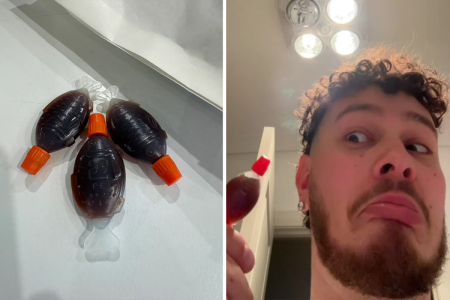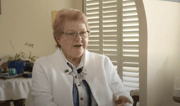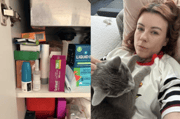Soy sauce fish are gone—so why are we still stuck with messy plastic?
By
Maan
- Replies 0
South Australians picking up sushi may have noticed something missing from their takeaway bag.
Those familiar soy sauce fish containers have quietly disappeared, replaced by sachets that many customers say are just as wasteful.
But behind the switch lies a bigger battle over the future of plastic in Australia.
South Australia became the first place in the world to outlaw the miniature soy sauce fish as part of its plan to curb single-use plastics.
In their place, some sushi shops turned to soft plastic squeeze packets—an option that experts and customers alike branded a backward step.
Jeff Angel, founder of the Total Environment Centre, urged restaurants not to swap one single-use plastic for another.
‘Any decision to produce another tiny little bit of so-called convenient plastic containing a consumable product needs to be rigorously assessed, and more than likely not done,’ he said.
‘Single-use plastic is a plague, and we have to take comprehensive action to get rid of it.’
A viral video on social media, with more than 256,000 views, showed a tub once filled with soy sauce fish now stacked with the new sachets.
Source: TikTok/dylancatacata
Many viewers were unimpressed, calling the change messy and inconvenient. ‘It’s literally still plastic,’ one person wrote. Another added: ‘So they replaced plastic… with inconvenient plastic?’
Sushi lovers also complained that the sachets were harder to open and more likely to spill. ‘They’ll probably end up being a massive fail [and] they’d spill all over everyone,’ one comment read.
The sachets may use less plastic than their fish-shaped predecessors, but they remain difficult to recycle. Australia’s soft plastic recycling system has been in limbo since the collapse of Redcycle in 2022, meaning most of these packets will end up in landfill.
NSW Environment Minister Penny Sharpe suggested more announcements on plastic bans could come later this year, though no other state has confirmed plans to follow South Australia’s lead.
Environmental concerns stretch beyond litter. Angel warned that plastics break down into microscopic pieces, which enter the food chain and even the air. ‘We shouldn’t forget that plastic in the environment, which is absorbed into our bodies is generated by us,’ he said.
Research published this year found humans inhale around 68,000 plastic particles a day. In oceans, fish consume microplastics before ending up on our plates, while on land, tiny fragments are absorbed by plants and animals.
South Australia’s ban also included other disposable items such as straws attached to juice boxes and cutlery bundled with takeaway meals.
The debate over soy sauce packaging isn’t just about convenience—it’s also about where all that plastic eventually ends up.
A recent incident in Sydney revealed just how quickly these small items can pile up and flow into our waterways.
It’s a stark reminder that even the tiniest pieces of packaging can leave a big mark on the environment.
Source: Instagram/seabin_project
Read more: This 20-second video might make you think twice about what ends up in your waterways

Will replacing one form of plastic with another ever solve the problem, or are we just shifting the waste around?
Those familiar soy sauce fish containers have quietly disappeared, replaced by sachets that many customers say are just as wasteful.
But behind the switch lies a bigger battle over the future of plastic in Australia.
South Australia became the first place in the world to outlaw the miniature soy sauce fish as part of its plan to curb single-use plastics.
In their place, some sushi shops turned to soft plastic squeeze packets—an option that experts and customers alike branded a backward step.
Jeff Angel, founder of the Total Environment Centre, urged restaurants not to swap one single-use plastic for another.
‘Any decision to produce another tiny little bit of so-called convenient plastic containing a consumable product needs to be rigorously assessed, and more than likely not done,’ he said.
‘Single-use plastic is a plague, and we have to take comprehensive action to get rid of it.’
A viral video on social media, with more than 256,000 views, showed a tub once filled with soy sauce fish now stacked with the new sachets.
Source: TikTok/dylancatacata
Many viewers were unimpressed, calling the change messy and inconvenient. ‘It’s literally still plastic,’ one person wrote. Another added: ‘So they replaced plastic… with inconvenient plastic?’
Sushi lovers also complained that the sachets were harder to open and more likely to spill. ‘They’ll probably end up being a massive fail [and] they’d spill all over everyone,’ one comment read.
The sachets may use less plastic than their fish-shaped predecessors, but they remain difficult to recycle. Australia’s soft plastic recycling system has been in limbo since the collapse of Redcycle in 2022, meaning most of these packets will end up in landfill.
NSW Environment Minister Penny Sharpe suggested more announcements on plastic bans could come later this year, though no other state has confirmed plans to follow South Australia’s lead.
Environmental concerns stretch beyond litter. Angel warned that plastics break down into microscopic pieces, which enter the food chain and even the air. ‘We shouldn’t forget that plastic in the environment, which is absorbed into our bodies is generated by us,’ he said.
Research published this year found humans inhale around 68,000 plastic particles a day. In oceans, fish consume microplastics before ending up on our plates, while on land, tiny fragments are absorbed by plants and animals.
South Australia’s ban also included other disposable items such as straws attached to juice boxes and cutlery bundled with takeaway meals.
The debate over soy sauce packaging isn’t just about convenience—it’s also about where all that plastic eventually ends up.
A recent incident in Sydney revealed just how quickly these small items can pile up and flow into our waterways.
It’s a stark reminder that even the tiniest pieces of packaging can leave a big mark on the environment.
Source: Instagram/seabin_project
Read more: This 20-second video might make you think twice about what ends up in your waterways
Key Takeaways
- South Australia banned soy sauce fish containers as part of its single-use plastics crackdown.
- Restaurants are now offering plastic sachets, which many customers say are just as inconvenient.
- Experts warned the sachets remain unrecyclable and contribute to plastic pollution.
- Microplastics were linked to health and environmental risks, including human inhalation and food chain contamination.
Will replacing one form of plastic with another ever solve the problem, or are we just shifting the waste around?








